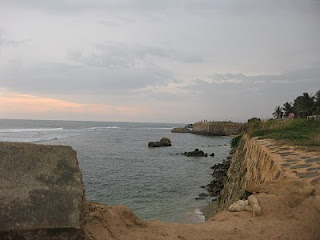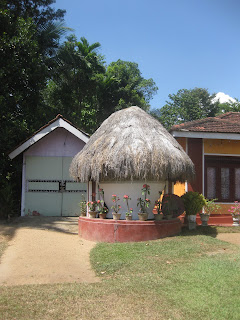- Finally, something else which Tower Hamlets is not. Some of my commenters are fond of saying that the borough is an example of “Third World” politics in the UK. There are indeed similarities – but actually the claim is an insult to the Third World. Bangladesh has got to grips with Islamism; the IFE’s Bangladeshi parent, Jamaat-e-Islami, gets about two per cent of the vote in elections there. No Islamist sympathiser in Bangladesh has unfettered control over a £1 billion budget. Bangladesh, in short, has less of a problem with Islamic radicals than Tower Hamlets.
http://blogs.telegraph.co.uk/news/andrewgilligan/100060304/labour-london-borough-becomes-islamic-republic/
- Outside the Wellington Way polling station in Tower Hamlets yesterday, as at many other polling stations in the borough, people had to run a gauntlet of Lutfur Rahman supporters to reach the ballot box. As one Bengali woman voter went past them, we heard one of the Rahman army scolding her for her “immodest dress.”That incident is perhaps a tiny taste of the future for Britain’s poorest borough now it has elected Mr Rahman as its first executive mayor, with almost total power over its £1 billion budget. At the count last night, one very senior figure in the Tower Hamlets Labour Party said: “It really is Britain’s Islamic republic now.”
For the last eight months – without complaint or challenge from Mr Rahman – this blog and newspaper have laid out his close links with a group of powerful local businessmen and with a Muslim supremacist body, the Islamic Forum of Europe (IFE) - which believes, in its own words, in transforming the “very infrastructure of society, its institutions, its culture, its political order and its creed… from ignorance to Islam.” Mr Rahman has refused to deny these claims.
We have told how the borough’s change from a conventional council leader to a mayoral system came about as a result of a campaign led and financed by these two groups – and how the IFE, in its words, wanted to “get one of our brothers” into the position.We have described in detail, again without complaint or challenge by Mr Rahman, his deeply problematic two years as council leader until he was removed from that post six months ago, partly as a result of our investigations. After he secured the leadership with the help of the IFE, millions of pounds were channelled to front organisations of the IFE, a man with close links to the IFE was appointed as assistant chief executive of the council despite being unqualified for the position and the secular, white chief executive was forced out. Various efforts were made to “Islamicise” the borough. Extremist literature was stocked in Tower Hamlets’ public libraries.




















